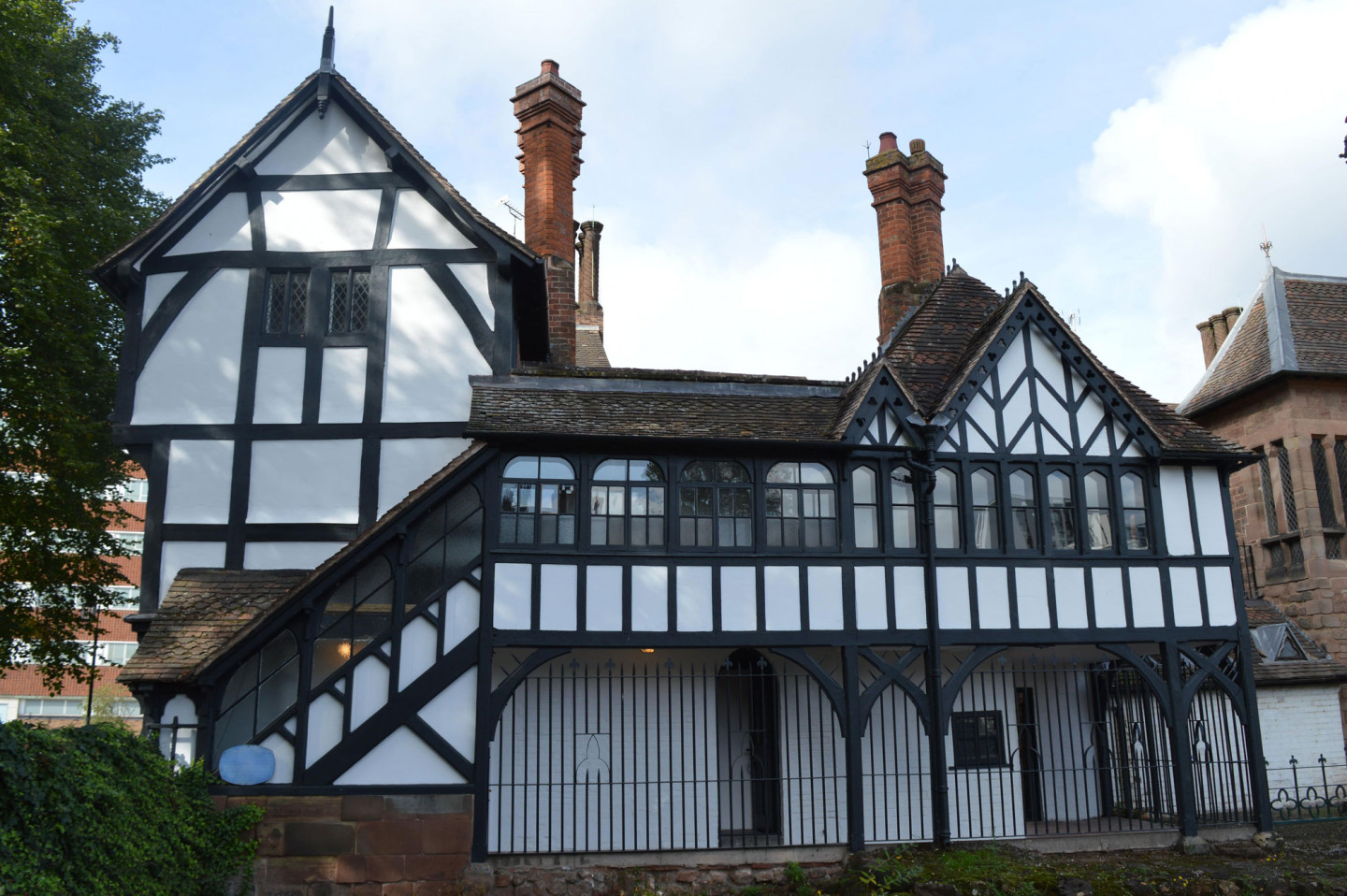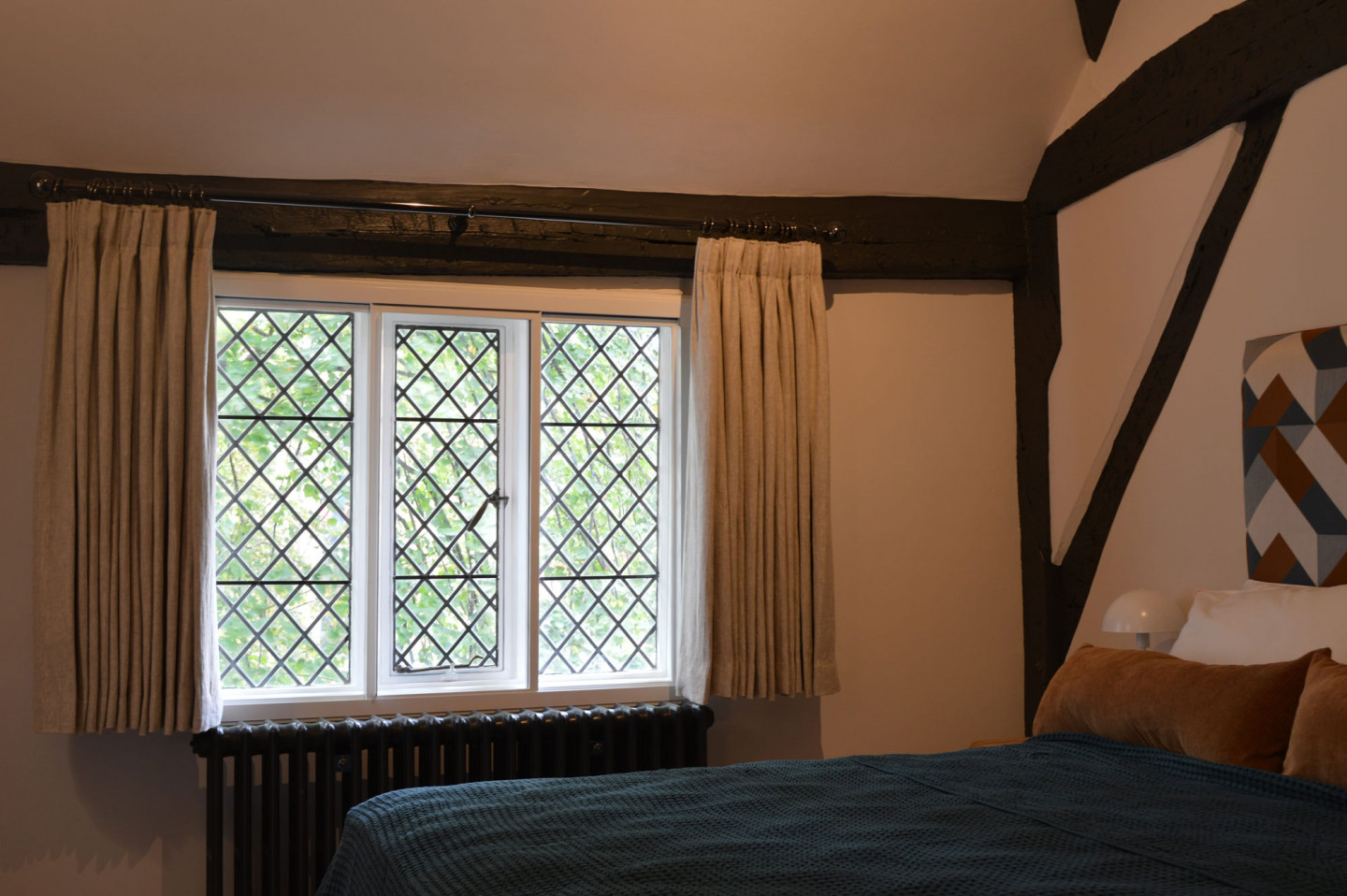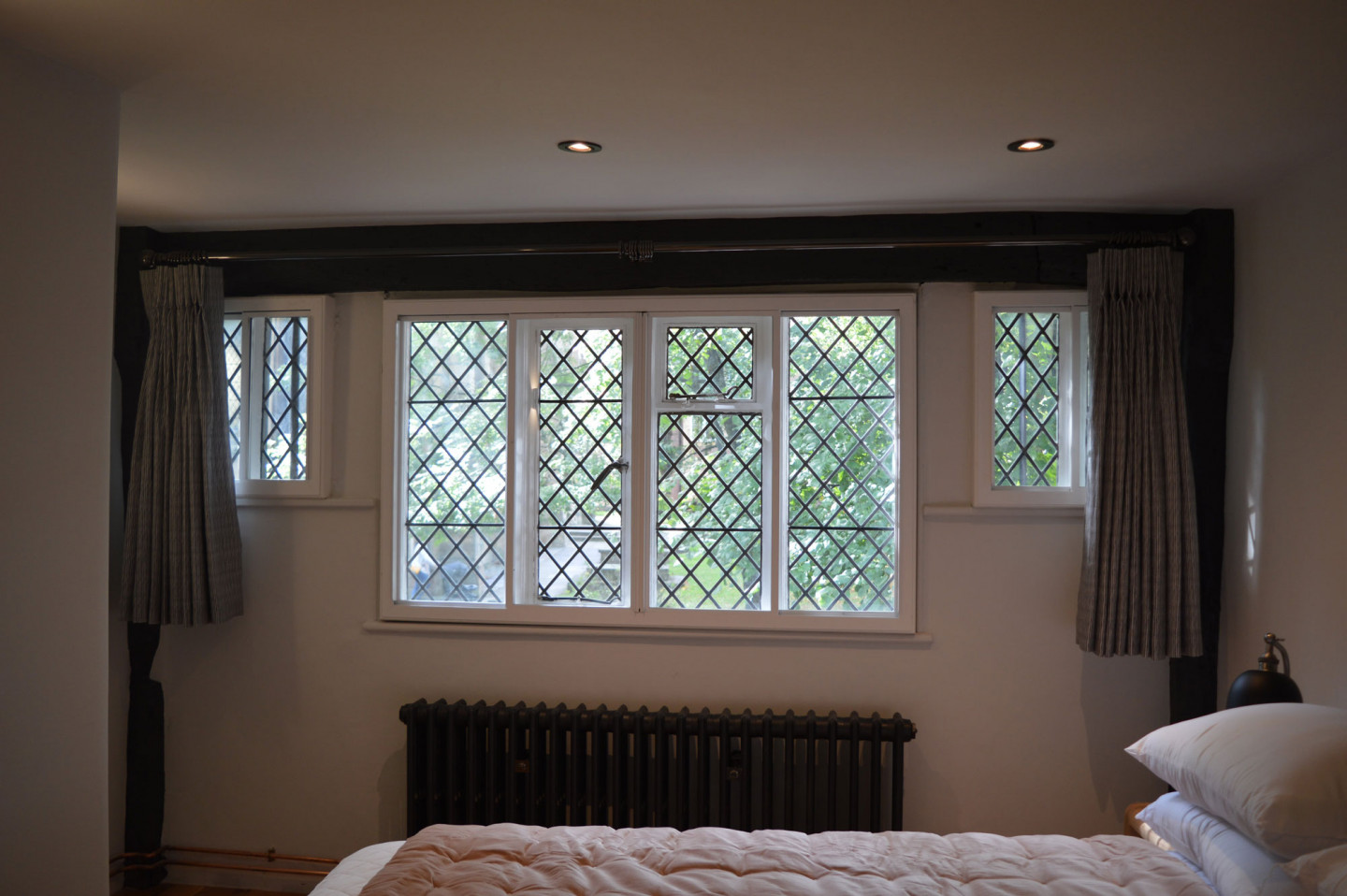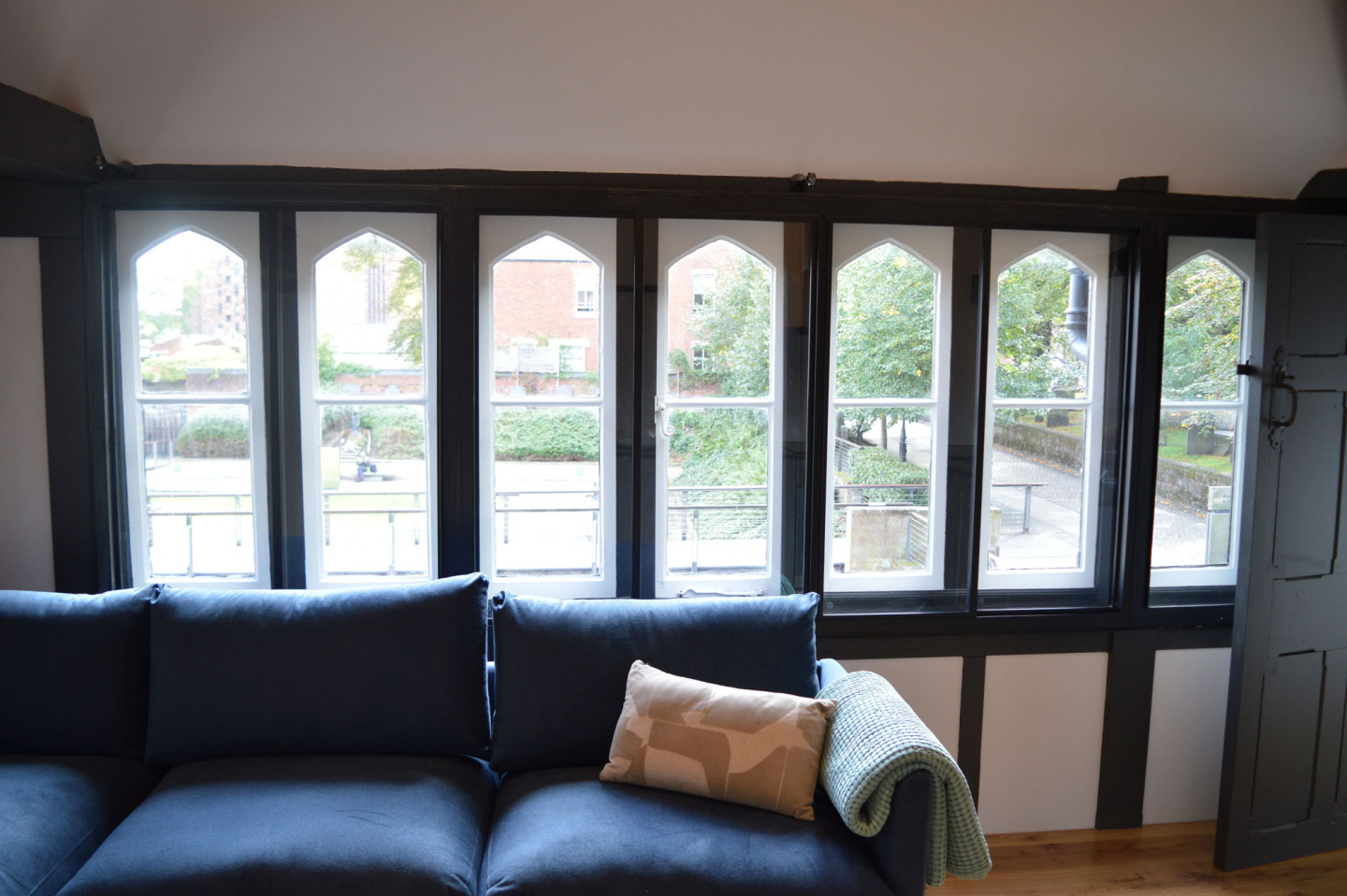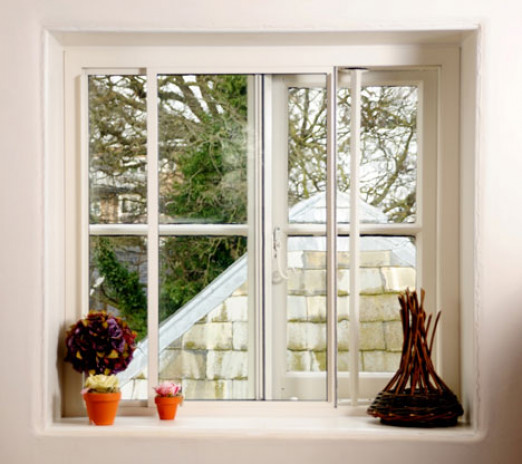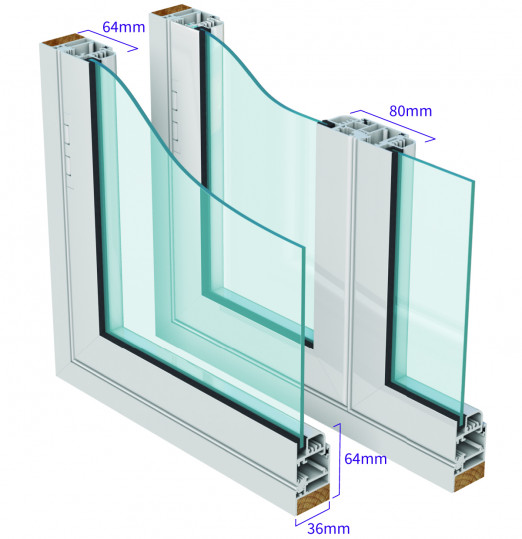3-5 Priory Row is a collection of some of the finest, best preserved 15th century timber framed cottages, overlooked by the 12th Century Holy Trinity Church in Coventry’s historic centre. They formed part of, and stand next to, the ruins of St Mary’s priory which was founded by Earl Lefric and his wife Lady Godiva known for the legend where she rode around the city on horseback naked covered only by her long hair. Remarkably, the cottages escaped ruin during the 1940 bombing raid which destroyed much of the historic city centre.
Designated of great architectural importance, the buildings are heritage Grade II*Listed. Although the timbers used in the cottage’s construction have been tree ringed, dating back to 1414, it is thought they were not built until around 1648 by Rev Bryan of Holy Trinity Church, using salvaged materials from other building projects. In 1855 they were restored and extended.
Originally the cottages were one building known as Lychgate House, its original function is unclear. Deeds of the late 16th century describe 6 cottages on the same site, which were gradually reconfigured to stand as is current with 3 cottages occupying what was once the large house. In the 19th century the building was in a state of disrepair and acquired by the neighbouring Blue Coat School, until the Council took over ownership at a later date. It became known as Coventry Prayer House, providing religious spaces for cross-denominational worship, some office space and also had a gift shop.
The next iteration of their use was to come, with Coventry Heritage Trust taking control of them to form one of the city’s leading heritage venues as part of its ‘City Of Culture 2021’ status. They have been painstakingly restored, refurbished and conserved, as luxury short term lets.
Architects Vagdia and Holmes set about obtaining planning permissions and put together the specifications to upgrade these architecturally challenging cottages. As they are Grade II* Listed, and in line with the clients wishes, any changes need to be of minimal intervention to retain their charm and character yet needed to be made comfortable and functional for those renting the spaces. As mentioned, they are timber framed with lath and plaster infills and in the main they had the original single pane diamond leaded decorative windows, doing little to provide thermal and acoustic insulation. Secondary glazing was deemed the only way to upgrade the window performance, so a straightforward specification was put together.
Messenger Construction carried out major structural repairs before the main refurbishment works could commence. During which, historic investigations had to be actioned as and when things were unearthed, such as historic oak wooden flooring hidden beneath carpets. An original window in what is referred to as the ‘Godiva Room’, was found in a wall, probably a left over from prior renovations now forming a feature. Messenger sub-contracted Selectaglaze to manufacture and install the secondary glazing units, with 2 sample windows to be provided initially for sign off by the client and architect.
Although an uncomplicated specification, the installation and surveying were highly demanding. The buildings have moved over time, so the windows were far from plumb and true. Some had reveals into which the secondary could be fitted and some not. Therefore, careful planning and consideration was given to the fixing details in each and every opening. They were measured and timber sub-grounds produced, which were installed to square up the reveal or to enable face fixing. A great deal of scribing was needed to meet the shape and nuances of the original timber surrounds. Once this element was in place, production measurements for the aluminium frames were taken to ensure an exact fit.
38 units were produced from across the slimline range of secondary glazing; Series 10 – 2 and 3 pane sliders were used for the smaller windows and 4 pane horizontal sliding units for those spanning just shy of 2 metres. Series 45 hinged casements were installed, a couple of which were glazed with satinovo glass to provide privacy. To match the dark wood reveals in a few of the windows, black frames were produced, with the rest of the secondary glazing in white to blend in with the surrounds.
“We have been pleased to work with a number of specialist suppliers like Selectaglaze, to realise the vision for these Cottages. It is reassuring and helpful to be supported by established and experienced suppliers and installers, we rely on their technical advice, critical challenge and “can-do” problem solving attitude.” Dhiran Vagdia of Vagdia and Holmes.
The installation of secondary glazing is unobtrusive and sensitive to the fabric of the building, plus with furniture and furnishings in place, the units become unnoticeable. The intervention of secondary glazing has helped create cosy and quiet refuges for visitors to the city of Coventry, maintaining the historic legacy of these buildings for many years to come.
Royal Warrant Holder Selectaglaze has one of the most comprehensive ranges of secondary glazing, allowing sympathetic treatment of almost any window style. Products are manufactured on site in the UK, designed and made to order for every job. All secondary glazing is thoroughly tested and meets essential standards covering; noise insulation, improved thermal performance and enhanced security. From Listed properties, to new-build hospitals, secondary glazing can be used to enhance any type of building.
Sign up for monthly Selectaglaze e-bulletins, with recent updates, new blogposts and events.
